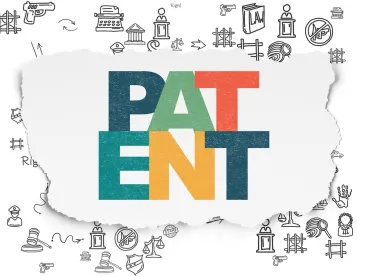Reversing a district court’s motion to dismiss, the US Court of Appeals for the Federal Circuit found patent claims directed to cardiac monitoring devices patent eligible under 35 USC § 101 because the claims were directed to a technical improvement to the function of such devices. CardioNet, LLC v. InfoBionic, Inc., Case No. 19-1149 (Fed. Cir. Apr. 17, 2020) (Stoll, J.) (Dyk, J., dissenting in part, concurring in the result).
CardioNet owns a patent directed to cardiac monitoring systems and techniques. The patent describes detecting and distinguishing atrial fibrillation (AF or A-fib) and atrial flutter (AFL) from other forms of cardiac arrhythmia (abnormal heart rhythms), such as ventricular tachycardia (V-TACH). The patent describes using electrodes on a patient’s skin to measure electrical signals of the heart and determining beat-to-beat variability in heart rate over a series of between 20 and 200 recent R-waves (peaks of QRS complexes shown on an electrocardiogram corresponding to ventricular contraction). Irregular ventricular beats are generally unrelated to AF or AFL, but are indicative of V-TACH. After detecting beat-to-beat timing of cardiac activity, analysis of the R to R interval (the time between ventricular contractions) therefore can be used to detect AF and AFL using non-linear statistical approaches.
After CardioNet filed an infringement suit against BioNet, BioNet filed a motion to dismiss, arguing that the asserted claims were directed to patent-ineligible subject matter under § 101. In Alice v. CLS Bank (IP Update, Vol. 17, No. 7), the Supreme Court of the United States held that laws of nature, natural phenomena and abstract ideas are not patent eligible. The two-step Alice framework for determining subject matter eligibility requires (1) determining whether the claims are directed to a “patent-ineligible concept,” such as an abstract idea, and (2) determining whether the claim elements individually, and in ordered combination, provide additional elements that “transform the nature of the claim” into a patent-eligible application.
Applying the two-step Alice framework, the district court concluded that the claims were directed to the abstract idea that AF and AFL “can be distinguished by focusing on the variability of the irregular heartbeat” and “identifying” AF or AFL “by looking at the variability in time between heartbeats and taking into account ventricular beats.” The district court further rejected CardioNet’s argument that the claimed invention represented “an improvement to the function of cardiac monitoring devices” and “more accurate and clinically significant” detection of AF and AFL. Instead, the district court considered the “idea of using a machine to monitor and analyze heart beat variability and interfering beats so as to alert the user of potential [AF or AFL] events” as possibly improving “the field of cardiac telemetry,” but not as “improvements to any particular computerized technology.” Accordingly, the district court found the asserted patent claims were directed to patent-ineligible subject matter under § 101. CardioNet appealed.
The Federal Circuit reversed, finding that the asserted claims were patent eligible because they were directed to an improved cardiac monitoring device and not to an abstract idea. The Court found that CardioNet’s patent was directed to a device that (1) detects beat-to-beat timing of cardiac activity, (2) detects premature ventricular beats, and (3) determines the relevance of the beat-to-beat timing to AF or AFL, taking into account the variability in the beat-to-beat timing caused by premature ventricular beats identified by the device’s ventricular beat detector. The Court explained that the claims “focus on a specific means or method that improves” cardiac monitoring technology, and are not “directed to a result or effect that itself is the abstract idea and [do not] merely invoke generic processes and machinery.” In reaching its conclusion, the Court relied on the patent specification, which described technical “advantages offered by” the claimed system, including the fact that the device more accurately detects the occurrence of AF and AFL and allows for more reliable and immediate treatment of these two medical conditions by avoiding false positives and false negatives.
After finding the claims patent eligible, the Court turned to the dispute on whether Alice step one could be resolved without remanding the case to the district court to assess the state of the art as of the invention date to determine whether there had been automation of doctors’ practice. The Court found that Alice step one does not require an evaluation of the prior art or facts outside of the intrinsic record regarding the state of the art at the time of the invention. Rather, the Alice step one analysis involves examining the patent claims in view of the plain claim language and statements in the written description (and the prosecution history, if relevant), but not the prior art or facts outside of the intrinsic record regarding the state of the art at the time of the invention. Thus, the Court found that reversal, as opposed to remand, of the district court’s dismissal was appropriate.
In his dissent (but concurrence in the result), Judge Dyk explained his view that the eligibility issue was “routine” and should have been “easily resolved” by applying “existing precedent.” In Dyk’s view, “the majority addresses issues never argued by the parties and appears to suggest approaches not consistent with Supreme Court and circuit authority.”
Practice Note: Whenever possible, thoroughly describe the real-world use, benefits and technical advantages of the inventive technology in the written description, in a manner that suggests more than mere automation or computerization of long-practiced techniques.



 />i
/>i
